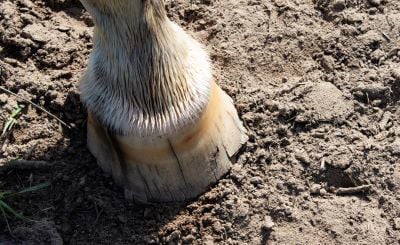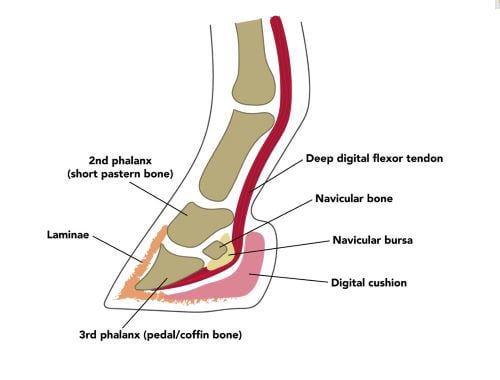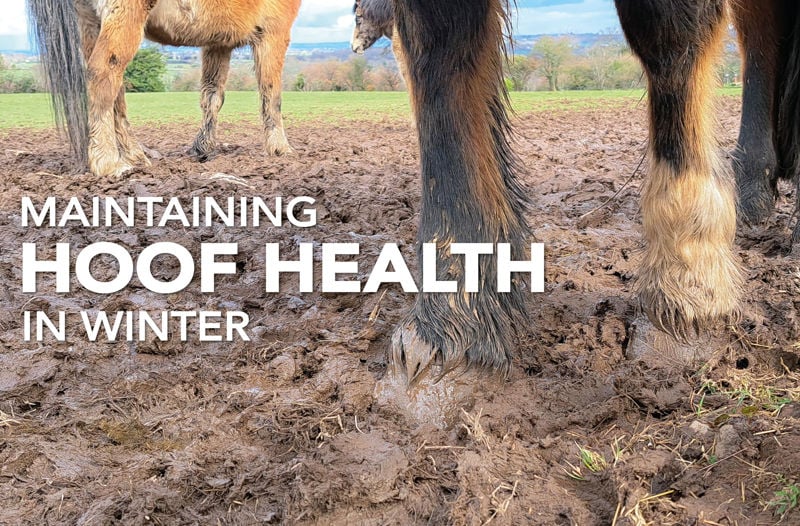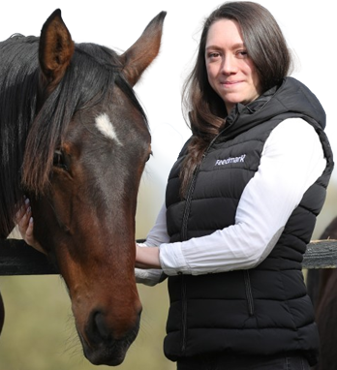Winter weather can have a huge impact on your horse’s hoof quality, therefore, it is important to focus on hoof health before the season changes to ensure continued hoof support for your horse. The external environment significantly affects hoof structures, with common winter issues like moisture imbalances, soft soles, and thrush often resulting from wet weather conditions.
Cold weather also negatively impacts hoof health as lower temperatures lead to reduced circulation to the extremities and slower hoof growth. Weakened hooves are a common winter issue and are caused by reduced exercise which is a common occurrence in the winter due to poor weather conditions.
Seasonal movements and nutritional regimes significantly affect the strength of the hoof wall as well as its mineral composition. Horses fed a balanced diet have greater hoof tensile strength, showing that a forage-only diet is unlikely to provide the horse with sufficient nutrients for a balanced diet.

Weakened hooves are a common winter issue.
Hoof anatomy
Within the hoof, the pedal/coffin bone and the navicular bone are the only skeletal structures found. To protect the Deep Digital Flexor Tendon from friction, the Navicular Bursa sits between this tendon and the Navicular Bone and lateral cartilage sits on either side of the bone to act as a cushion.
The pedal bone is held in place by a complex arrangement of Laminae. These delicate structures attach the pedal bone to the hoof wall. Their structure allows them to hold large amounts of weight while also allowing flexibility of the hoof.
The frog is the hard structure pointing towards the centre of the hoof. It is primarily used as a shock absorber but also plays a role in the circulatory system. On either side of the point of the frog, there are two groves, these are known as the bars which work alongside the hoof wall to provide support during weight-bearing.
The inner layer of the hoof wall is known as the white line. It is a pale structure which appears soft and fibrous to the touch. The white line is where laminae attachments have grown out.

Influencing Hoof Growth
Hoof quality and growth are influenced by genetics and the nutrients that the horse consumes. Whilst we can’t influence the genetics of the horse in front of us, you can feed your horse appropriately to support healthy hoof growth. For horses and ponies that struggle with weak hoof horns or those that have slow hoof growth, providing certain nutrients at higher levels can help the body to produce strong hoof structures. The beneficial effect of feeding such nutrients on hoof quality may not be seen for several months because mature horses’ hooves grow relatively slowly at a rate of 8-12mm per month, meaning it can take 9 to 12 months for changes in hoof quality to be seen.
Protein & Amino Acids
The hoof comprises mainly of keratin, a protein made of amino acids which contributes to the durable structure of the hoof wall. As the horse is not able to produce all the amino acids it requires, some amino acids must be supplied in the diet, these are referred to as essential amino acids. Amino acids are the building blocks of protein, with Lysine being the first limiting amino acid. When Lysine is deficient, the synthesis of proteins within the body is limited, even if all other amino acids are present in adequate amounts. As such, it is essential to provide adequate Lysine in the diet, and providing Lysine alongside amino acids Threonine and Methionine within the diet will aid keratin synthesis and optimise hoof quality.
Methionine is important because the horse converts it to Cystine, an amino acid which provides keratin with its structure and durability, however, Vitamin B6 (Pyridoxine) must also be present in the diet to allow this to happen.
Fatty Acids
Omega fatty acids are long chains of carbon and hydrogen atoms that form polyunsaturated fatty acids (PUFAs) that give structure to the cell walls in the body’s tissues and aid the absorption of the fat-soluble vitamins A, D, E and K. Fatty acids are components of the cement that binds the individual cells of the hoof and also form a permeable barrier that controls hoof moisture level, making them important for hoof quality. As horses cannot produce their own PUFAs, they must be provided within their diet, making them essential nutrients.
Vitamins
Biotin (also known as Vitamin B7 and Vitamin H) is the most widely researched vitamin with regards to hoof health. Whilst B vitamins, including Biotin, are by-products produced from fibre fermentation within the horse’s hindgut, it can be beneficial to provide additional Biotin in the diet. It is advised that horses who are prone to weak, brittle or cracked hooves, receive long term supplementation of Biotin to maintain the growth rate of the horn as when supplementary dietary Biotin is reduced or removed, the hoof may once again deteriorate.
Minerals
Zinc is a trace mineral that is responsible for numerous roles within the equine body and is involved in the uptake of amino acids and Sulphur, and thus the synthesis of keratin. For Zinc to be absorbed it must be provided in the correct ratio to Copper, another trace mineral. Zinc can be found in high concentrations within the hoof tissue and so a deficiency can be easy to detect. Slow hoof growth, thin walls and weak horn can all indicate a Zinc deficiency. Copper aids the formation of the cross-links within keratin that give the hoof its strength and density.
UK soils are often low in Copper and Zinc which generally means that the forage grown in these soils are also low in these nutrients. Horses grazing such areas or consuming forage harvested from such land may be more susceptible to associated deficiencies, meaning an additional supply of such nutrients are required through the feed or supplementation.
Within the actual hoof structure, Calcium is only present in very small quantities, yet it is vital to help make cross-links of Sulphur between proteins in the hoof horn, in turn creating a stronger and healthier hoof. Seasonal changes affect the Calcium content of hooves with higher Calcium content within hooves during spring, summer and autumn compared to the winter, likely due to higher Calcium content within forage and grass.
Sulphur is also important for keratin formation and although typically used within joint supplements, MSM (Methyl sulphonyl methane) is an excellent source of dietary Sulphur, a mineral necessary for the integrity of the hoof wall due to its role in bonding protein strands in the hoof.
For any advice or questions you may have, please don't hesitate to reach out to our expert nutrition team. You can call 0800 585525 Monday-Friday 8:30am-5:00pm. Email [email protected], or send us a DM on social media.



